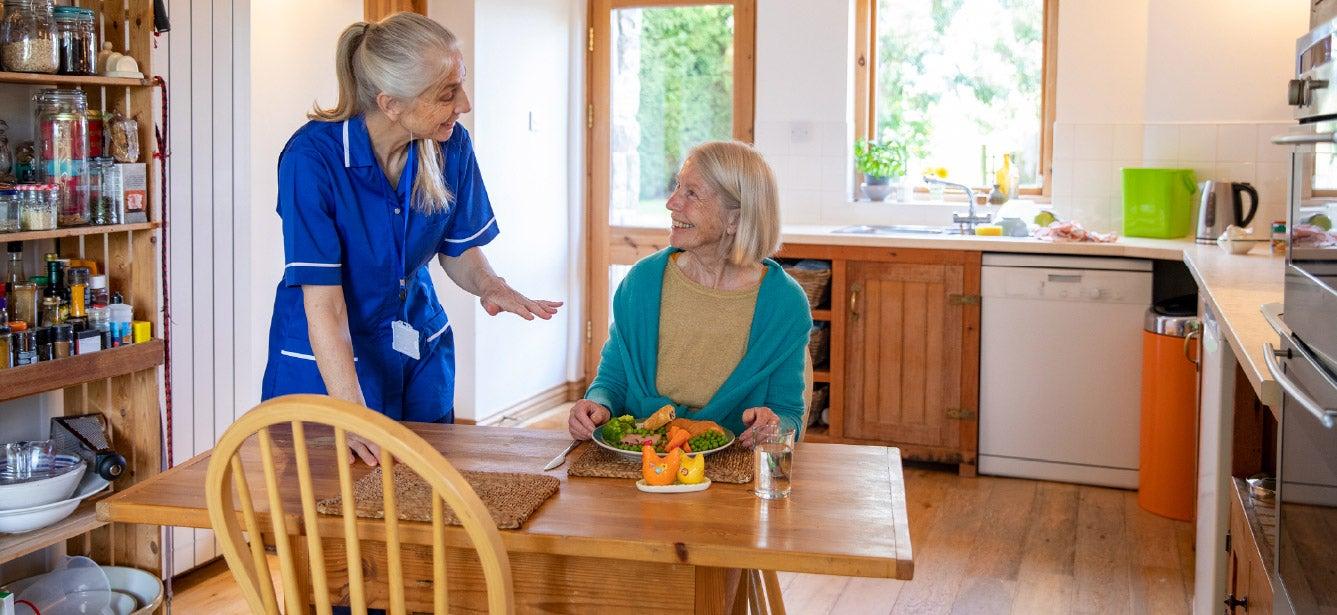
Whether retiring to a warmer climate; relocating to be nearer children, grandchildren, or family caregivers; or simply seeking a change of pace, more than 3 million Americans age 65 and older move each year—many of them across state lines.1
Arlene is one of them. After a few years living in Florida as a “test drive,” this 82-year-old decided she preferred her home state of Montana.
It wasn’t until she’d moved back, however, that Arlene realized several vital benefits didn’t move with her. As a result, she spent a few months without the financial support she depended on, including from the Supplemental Nutrition Assistance Program (SNAP) and her Medicare Savings Program (MSP).
“Like many people enrolled in such programs, Arlene didn’t know she was the one that needed to update her other benefits,” said Jen Teague, Director of Health Coverage and Benefits at NCOA. “She assumed they automatically would transfer, just like her Medicare did.”
So: why didn’t they? “Because Medicare is a federally administered program, while SNAP and MSPs are run by individual states,” Teague explained. “And states have different requirements for eligibility, application, and ongoing coverage for the benefits programs they run. As you might imagine, these differing rules often mean a simple transfer just isn’t possible.”
Understandably, this may sound confusing. But it doesn’t have to be. Moving is stressful enough. If you or an older adult you know plans to relocate to a new state, this handy FAQ can help demystify the process of keeping your benefits when you do.
Here’s what you need to know if you're moving and receive benefits
Why do some benefits automatically transfer, while others don’t?
It may help to think of it this way:
🧳 Federal benefits are like a suitcase and go with you.
💡 State benefits are like a utility service you need to cancel before you leave..
“That’s because you can’t be enrolled in the same benefits program in two different states at once,” Teague said. “But, just as with your electricity or land line, you can reconnect to those benefits in your new state, provided they are available.”
We’ll walk you through how to do that a little further down.
How do I know which benefits will and won’t transfer?
Unfortunately, there’s no central, comprehensive list to consult. However, you can use the following table as a general guideline.
| 🟢 DOES Move With You | 🔴 DOESN’T Move With You | 🟡 MIGHT Move With You |
|
✅ Medicare ✅ Social Security Disability Insurance (SSDI) ✅ Supplemental Security Income (SSI) |
❌ Low Income Home Energy Assistance Program (LIHEAP) ❌ Medicaid ❌ Medicare Savings Programs (MSPs) | ❔Medicare Low-Income Subsidy* (LIS / Extra Help) |
*Although Extra Help is a federally-administered benefit, certain eligibility requirements depend on your enrollment in state-run programs such as Medicaid or an MSP.
Keep in mind that this list is representative and subject to change. You may be enrolled in a program that doesn’t appear here, for instance; or a program that does appear here may follow different rules in your state. That’s why you should always check with the local administrative office for each program you are currently enrolled in: both in the state you are moving from, and in the state you are moving to.
“That’s the only way to know for certain whether your benefits will go with you, and what you need to do to avoid a lapse if they don’t,” Teague explained.
What steps should I take to keep my benefits? When should I take them?
The exact process differs by state. That said, the following two guidelines apply in most cases:
- Cancel your benefits in your current state. Aim to do this within two weeks of moving.
- Re-apply for benefits in your new state. Do this immediately upon arriving, or as soon as you reasonably can.
Here’s an example to show you what this looks like.
Let’s say, like Arlene, you are planning to move from Florida to Montana and want to be sure you keep your SNAP benefits. You would take the following steps:
- Before leaving Florida, contact your local SNAP office. Tell them you are moving out of state. This step is important, because you will not be eligible for SNAP in Montana until your Florida benefits are closed out.
- Follow all directions to cancel your Florida benefits. You may be able to do this over the phone, online, or by visiting the SNAP office in person. Ask the customer service representative about the option that’s fastest and most convenient for you.
- Request a copy of your benefits termination letter. This will prove that you canceled SNAP in Florida and make it easier to apply and be approved for it in Montana.
- As soon as you arrive in Montana, contact your new SNAP office. Tell them you recently relocated from Florida and would like to re-apply for benefits in Montana.
- Follow all directions to complete and submit your application in Montana.
Keep in mind that this is only one example of a typical scenario. The overall process may look similar for Medicaid, LIHEAP , or an MSP, but the actual steps may differ depending on the program and state.
“Also—and I can’t stress this enough—you absolutely should plan in advance for any short gaps in state coverage that may occur,” Teague said. “For example, if you receive SNAP assistance, make sure you have a plan to afford groceries for a few weeks while you settle into your new home, just in case your re-application approval takes a little longer than expected.”
Who should I contact to cancel existing benefits and apply for new ones?
Remember, this is a two-step process. First, report your move to the appropriate benefits administration office in your current state; then, get in touch with the local office in your new state.
You may find local contact information for common state benefits programs here:
Where can I find additional help?
If you’re still unsure what to do, get in touch with your local Benefits Enrollment Center. These community-based organizations and their caring, professional staff help Medicare-eligible people—including older adults with low incomes and younger adults with disabilities—find and apply for crucial financial assistance programs in their state. That’s what Arlene did. And that’s how she quickly re-qualified for SNAP and MSP benefits in Montana. Benefits counselors also successfully advocated for reduced rent based on Arlene’s income.
Additionally, NCOA’s free BenefitsCheckUp.org tool provides details on nearly 2,000 federal, state, and local benefits programs in both English and Spanish. Visit at any time to browse programs and contact information in your state. You can also access personalized support and guidance though a call center, online chat, or email.
Source
1. Peter J. Mateyka, et al. Domestic Migration of Older Americans: 2015-2019. U.S. Census Bureau, Current Population Reports. Found on the internet at https://www.census.gov/content/dam/Census/library/publications/2022/demo/p23-218.pdf



